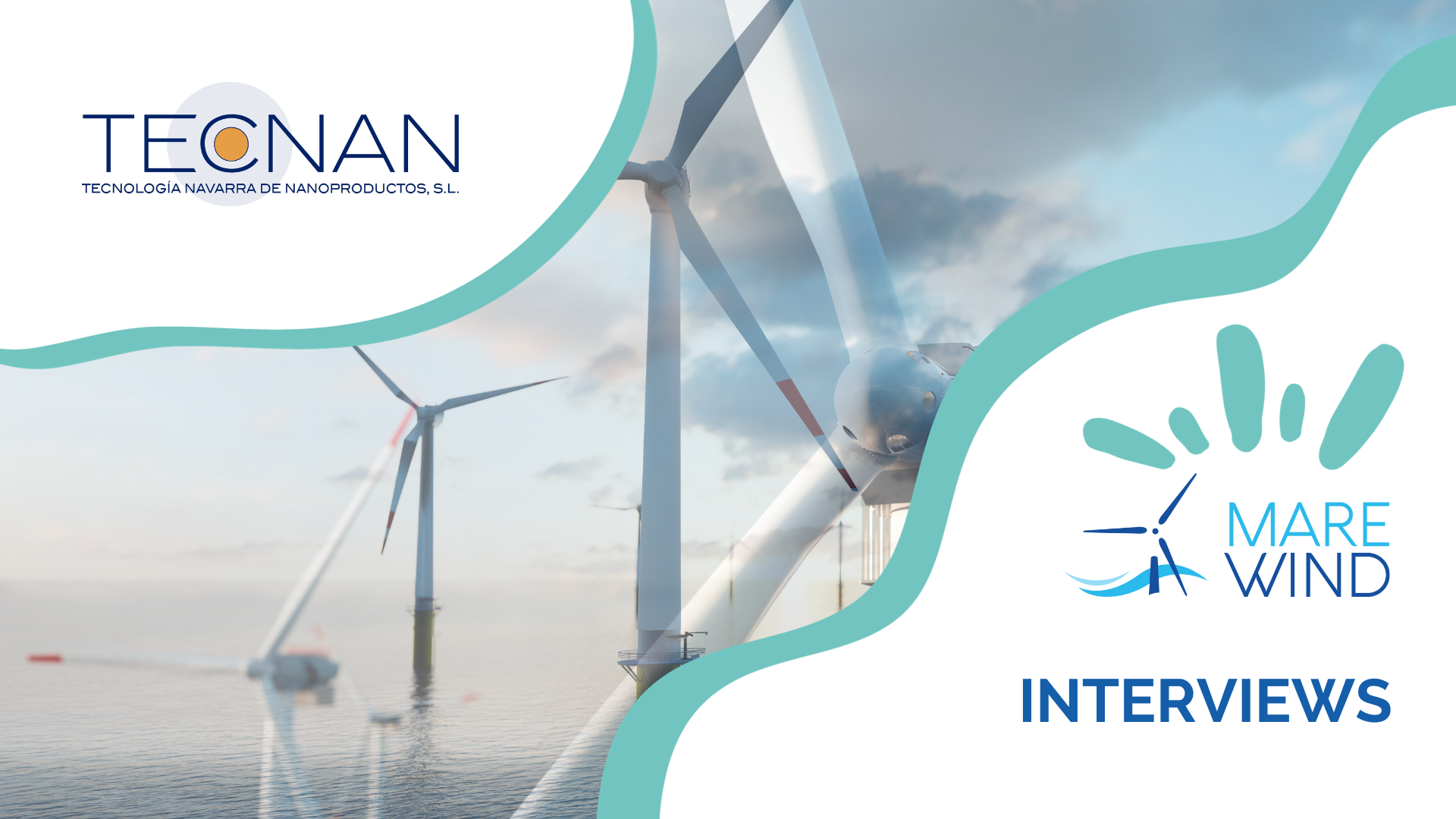TECNAN, leader in upscaling production of cutting-edge coatings
01 February 2024
Why did you join the MAREWIND project and what’s your role?
TECNAN counts with a wide expertise in the production of functional nanocoatings to improve surface properties as well as to increase the useful life of base materials. In this sense, different products are addressed for different substrate materials; reaching, for example, surfaces with hydrophobic and/or easy to clean properties. This fact can be translated into a reduction of O&M operations to maintain accepted performance.
In this point, although TECNAN’s coatings have been involved in other projects related to renewable energies, MAREWIND project is an opportunity to test additional functional products and to open a new research and commercial line for TECNAN through the validation of two products addressed to increase the life of materials employed in windfarms and, due to this fact, to reduce the Levelised Cost of Energy (LCOE) associated to energy production of offshore windfarms, which imply highly demanding conditions. This is an interesting challenge for TECNAN as nano-based coating developer.
What are your ambitions in contributing to the European renewable energy targets?
We actively contribute to the advancement of anticorrosion and antifouling coatings. The validation of the effect of those functional nanotechnological coatings will allow us to contribute in reducing the LCOE associated to energy production by an increase of the useful life of materials, through high protection of the surface and reduction of maintenance operations. Moreover, TECNAN is directly responsible of the upscaled production of the mentioned coatings and this contributes to the potential industrial implementation, so that the solutions can reach the market and make a difference in the establishment and growth of renewable energies.
What have been the most unexpected challenges and rewarding successes you have encountered while leading the “Definition of requirements” activities, how do you see these shaping the MAREWIND project’s future direction?
The requirement’s definition step has implied an extensive search for solutions to multiple factors. That is why we had to do a very big exercise in process design and goals definition to finally extract and build all requirements. Naturally, this work implied the contribution of multiple partners trying to establish materials, sizes, evaluation, life time, even productive capacity. That’s why having been able to organise the information was the main challenge, hence, satisfactorily establish all the needs that must be taken into account, has been a great success for us.
In summary, the requirements defined were the cornerstones to solidly build the technical structure in the MAREWIND project. That is why, to date, this fact has allowed us to achieve the partial objectives established in DoA. And, thinking positively, they will allow us to continue working, in the coming months, on the validation of all innovative products on real scale.
What key insights have you gained from the validation testing of anticorrosion coatings that could potentially revolutionise this field?
The results obtained to date have demonstrated good performance in the corrosion protection of metallic substrates employed thanks to the multiple characterisation and testing carried out along the project, both at laboratory scale and at real exposure. From the tests carried out, it is clear that the treated samples show great protection, on the one hand, exposed in the saline mist chamber for more than 4500 hours without any corrosion shown, and on the other hand, showing great protection in real conditions, where apart from visual revision, coating adherence or hardness were evaluated after exposure showing excellent conditions after 8 months.
This fact, if confirmed in final demonstrative tests, could be translated into a drastic innovation in windmills located off-shore, since it would reduce both the production costs of the mills themselves (since the coatings used, achieve good performance with much lower thickness than commercial ones) as well as activities addressed for repairing and maintenance to keep surfaces without corrosion. Extending the useful life of these mills and reducing, at the same time, the final cost of the energy generated.
Through the validation test for antifouling coating, how are you contributing to the efficiency and longevity of offshore wind farms?
So far, preliminary results revealed that antifouling coating retard fouling growth, since treated surfaces prevent organism from attaching. In this sense, materials are more protected enabling an improved maintenance and an increase in material longevity.
What are the main results you have achieved as partner in the MAREWIND project?
As a partner of MAREWIND project, the main achievement for TECNAN has been related to the industrial production and validation of the antifouling and anticorrosion coatings at different levels. Nevertheless, the best is still to come, since these products are going to be tested under real conditions in selected demos-sites. In this way, a total validation of performance will be reached and a complete assessment of the coatings accomplished.
How do you see the future of the MAREWIND project?
The MAREWIND project has reached a highly promising stage, having successfully advanced on all the outlined developments mentioned in the proposal. In fact we not only met but improve the initial global objectives. As we move forward in the upcoming months, our focus will be on translating these achievements to a real scenario where different demonstrators will be used to evaluate all the innovation in real operating conditions.

